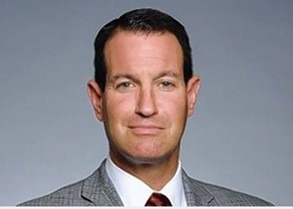What communicators should do following Biden’s new vaccination mandate
Some organizations are already in sync, but either way, expect tensions and frustration to escalate.

Communicators reacted with a mix of caution and support for President Joe Biden’s sweeping new vaccine policies, which require virtually all federal workers and contractors to get vaccinated and all employers with more than 100 employees to require vaccination.
The Biden administration said Thursday that the president’s executive orders will affect roughly 100 million Americans.
In the orders, all executive branch employees and federal contractors will be required to be vaccinated. Biden also announced new vaccination requirements for health care providers. He said he asked the Department of Labor to issue an emergency rule requiring all employers with 100 or more employees to ensure their workforce is fully vaccinated or require any unvaccinated workers to produce a negative COVID test at least once a week.
“We’ve been patient, but our patience is wearing thin,” Biden said, speaking directly to the millions of people who he said were still unvaccinated. “Your refusal has cost all of us.”
For communicators, one of the biggest challenges all along has been the ever-changing and sometimes conflicting directives from local, state and federal agencies, notes Julie Baron, a strategic planning and change-communications expert with Ragan Consulting Group. “Keeping up with all this is even more challenging for companies with offices, manufacturing and warehouses around the country and globe,” she says. “The new Biden rule should alleviate some of our communication challenges—although we must still strategically partner with HR, legal and others in the organization to ensure clear and consistent messaging.”
In terms of planning the communications effort, Baron adds, the approach should be no different than with any other change communications-related event.
“Employ all the concepts used in good strategic planning,” she says. “It should be no different. Use research tools like pulse surveys to capture sentiment. Use the data gathered as an input to strategic planning including audience analysis and message development.”
For the moment, some organizations are taking a wait-and-see approach.

Lewis
“We will be reviewing the new order once it becomes available,” says Kena Lewis, corporate director for public affairs/media relations for Orlando Health, a network of hospitals in central Florida.
“As a health care organization, we will continue to strongly encourage vaccinations for all team members and physicians at Orlando Health until we have a clearer understanding of the new requirements.”
But for others, Biden’s orders sync with already existing policies.
“Since the beginning of the pandemic, our decisions have been driven by a focus on our collective health and well-being, and providing a safe environment in which our employees can do their best work, says Donna Kimmel, chief people officer at Citrix Systems, the Fort Lauderdale, Florida-based software company. “We recently conducted surveys in several locations, and nearly two-thirds of respondents said that they would be more likely to work from an office if only those who were fully vaccinated were permitted to enter.”

Kimmel
With that in mind, Kimmel adds, beginning Oct. 1, Citrix will require all employees and contractors in the United States, India, the U.K. and Canada to be fully vaccinated to enter offices or engage in Citrix meetings, events, or travel. Medical or religious exemptions will be considered.
In terms of messaging these and other policies, Kristin Graham, a culture and employee-engagement consultant with Ragan Consulting Group, suggests a variety of steps.
- Reassess benefits to support employees (e.g., onsite vaccine clinics).
- Train HR professionals how to handle the coming influx of exception requests.
- Use multiple communications channels to ensure clarity (e.g., home mailers, Slack posts, panels with experts, workplace signage, and more).
- A central source for FAQs posted on intranets, wikis and the like, that update when the latest changes are made and lists pressing question.

Graham
“This can be done even if the answer is, ‘We don’t currently have enough information to answer this question but want to acknowledge the sentiment/concern,’” Graham says.
Brian Weinthal, a nationally prominent employment lawyer based in Chicago, adds that comms teams need to stay in close contact with their legal and marketing teams to determine how best to craft messaging. “Vaccination is a ‘trigger’ for many, so remaining open and honest about how this process will work is key,” Weinthal says. “At the same time, for employees who raise concerns, companies should ensure that objections are kept confidential, and the individual employee requests for exceptions are not publicly aired or discussed.”

Weinthal
Weinthal adds that these new mandates will cause hardship.
“Vaccine mandates are controversial because they highlight the debate over what level of individual freedom employees should enjoy,” Weinthal says. “Companies and organizations that were not previously considering the vaccination status of their employees will need to quickly begin thinking about the best ways to determine who is vaccinated.”
The next immediate step, he continues, is for organizations to develop a protocol for engaging employees who refuse to get the vaccine or request a waiver or exemption from the requirement.
Baron, though, suggests that the Biden rules “put companies on a level playing field, and can be confident about moving forward with the mandate, because they have this guidance,” she says. “They may worry less that they’re going to lose an employee.”

Baron
Prior to Biden’s announcement, and as things stand right now, U.S. companies are all over the map on vaccination requirements. A Bloomberg compilation of policies of more than 100 big companies found that about half have implemented a vaccine mandate for at least some of their U.S. staff, but requirements vary. Some require vaccination to enter the office, but sometimes the mandate doesn’t apply to retail, warehouse or outdoor workers. In addition most companies haven’t required proof of vaccination from employees, Bloomberg added, also noting that 14% of American adults don’t expect to get vaccinated.
For organizations thinking about their next move, Harvard Business Review offers a comprehensive look at how to proceed, including on the communications front. “Their decisions could have a significant impact on their short-term productivity and profits as well on long-term ability to attract and retain needed talent,” HBR said. The journal recommends these actions.
- Evaluate the risk of workplace spread.
- Assess the likely impact of a vaccination mandate on talent.
- Calculate the economic impact of a mandate.
- Develop straightforward policies and procedures to make the mandate easy to implement.
- Implement a comprehensive communication plan.
- Proactively address liability concerns.
- Measure the effectiveness of the mandate.
At any rate, expect a rocky road ahead. Before Biden’s executive orders, the frustrations of those who did not wish to be inoculated was mainly directed at employers who voluntarily put these mandates in place, Weinthal notes. Now it’s going to be directed at the government, almost certainly making the debate even more open and more heated.






